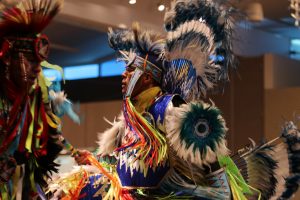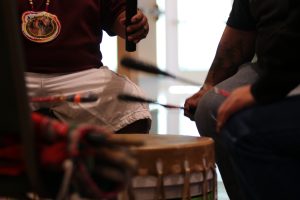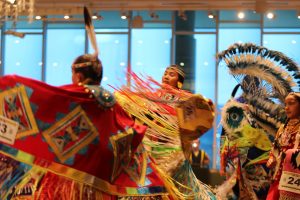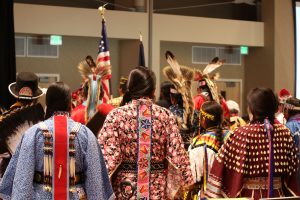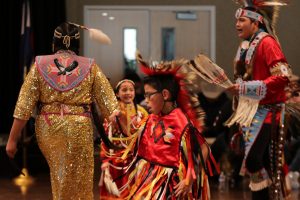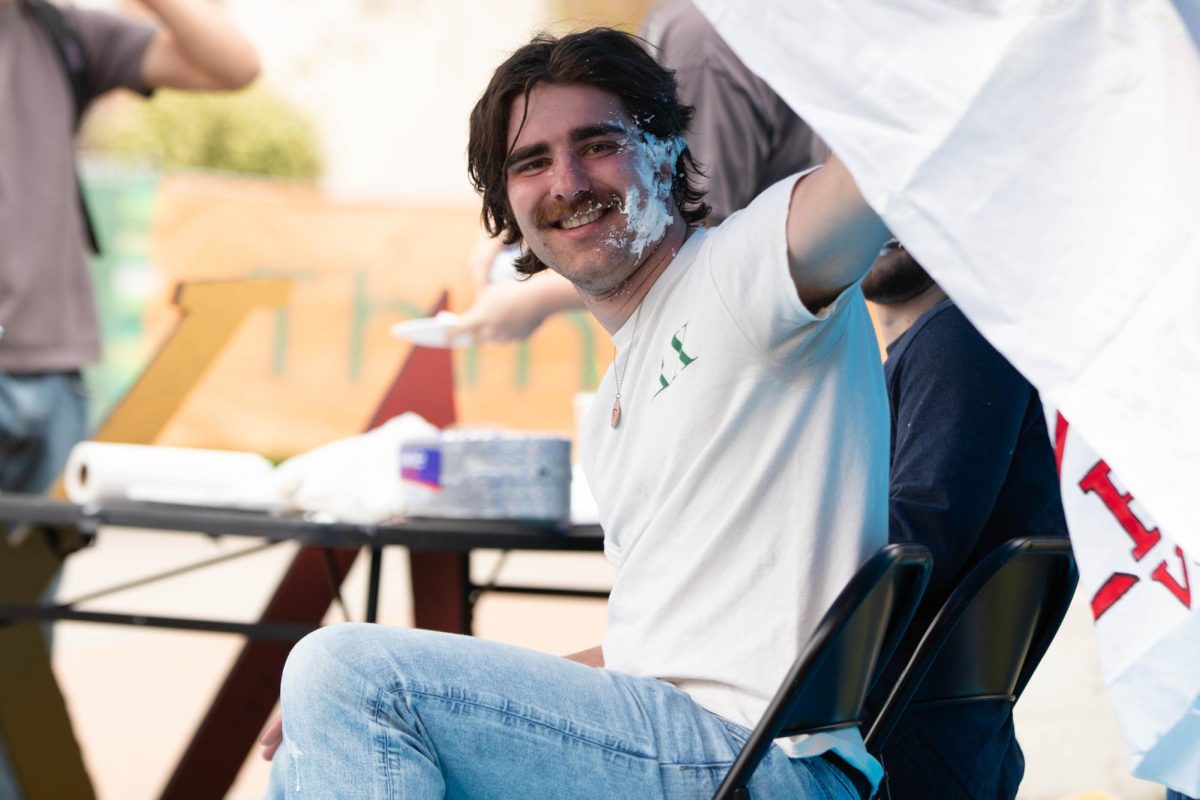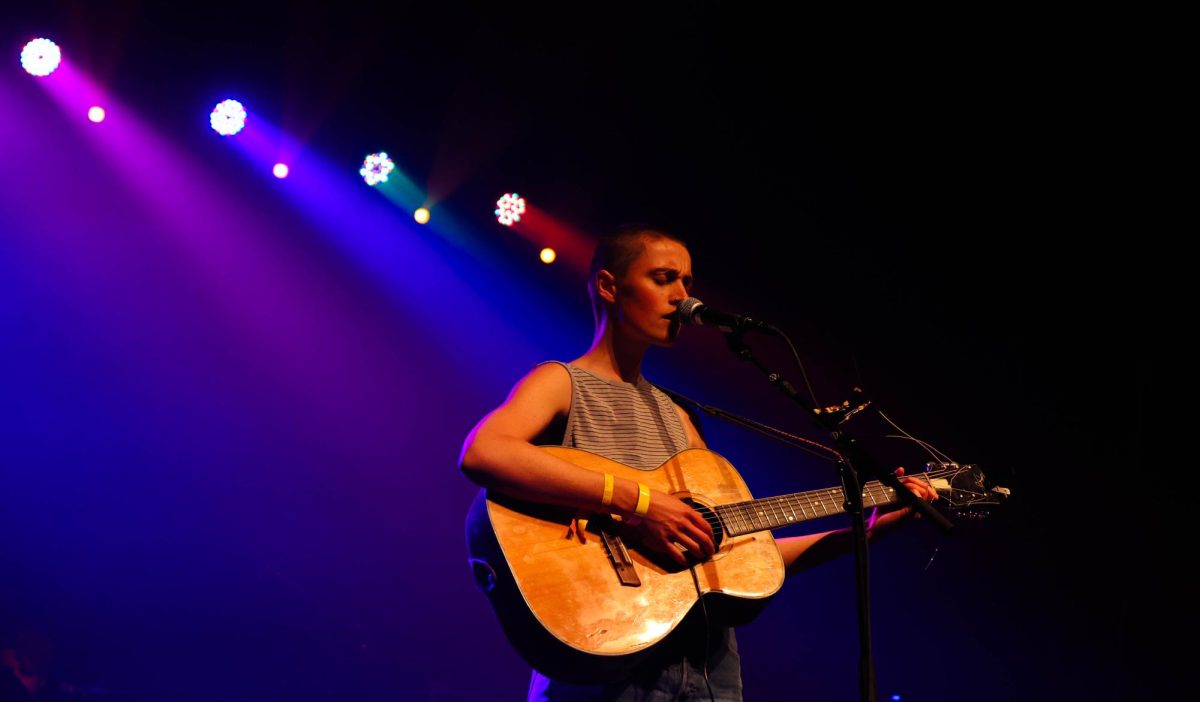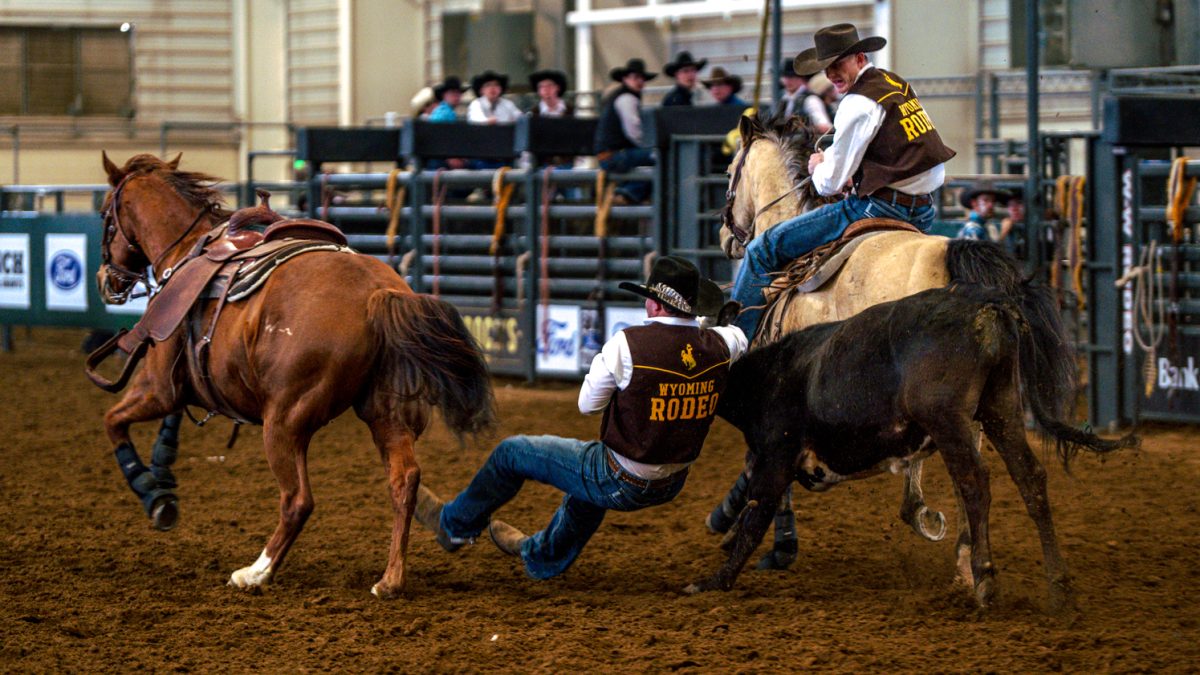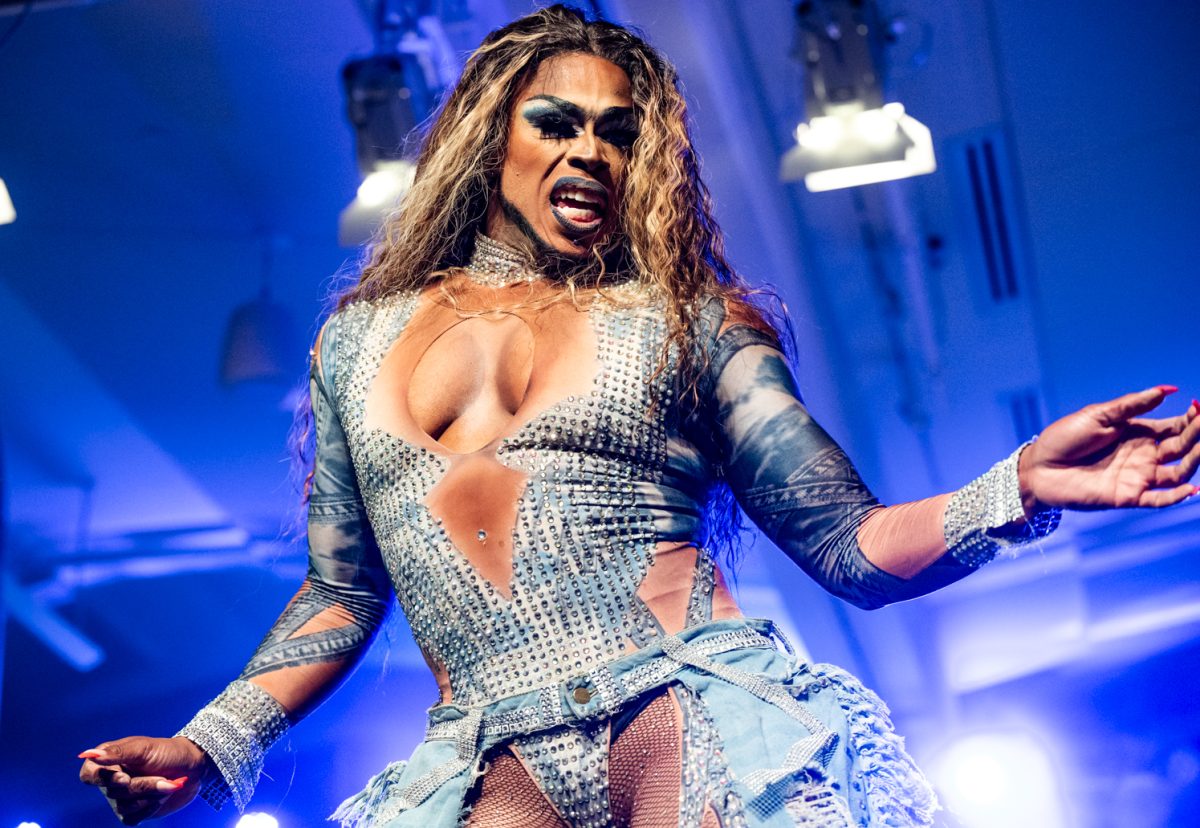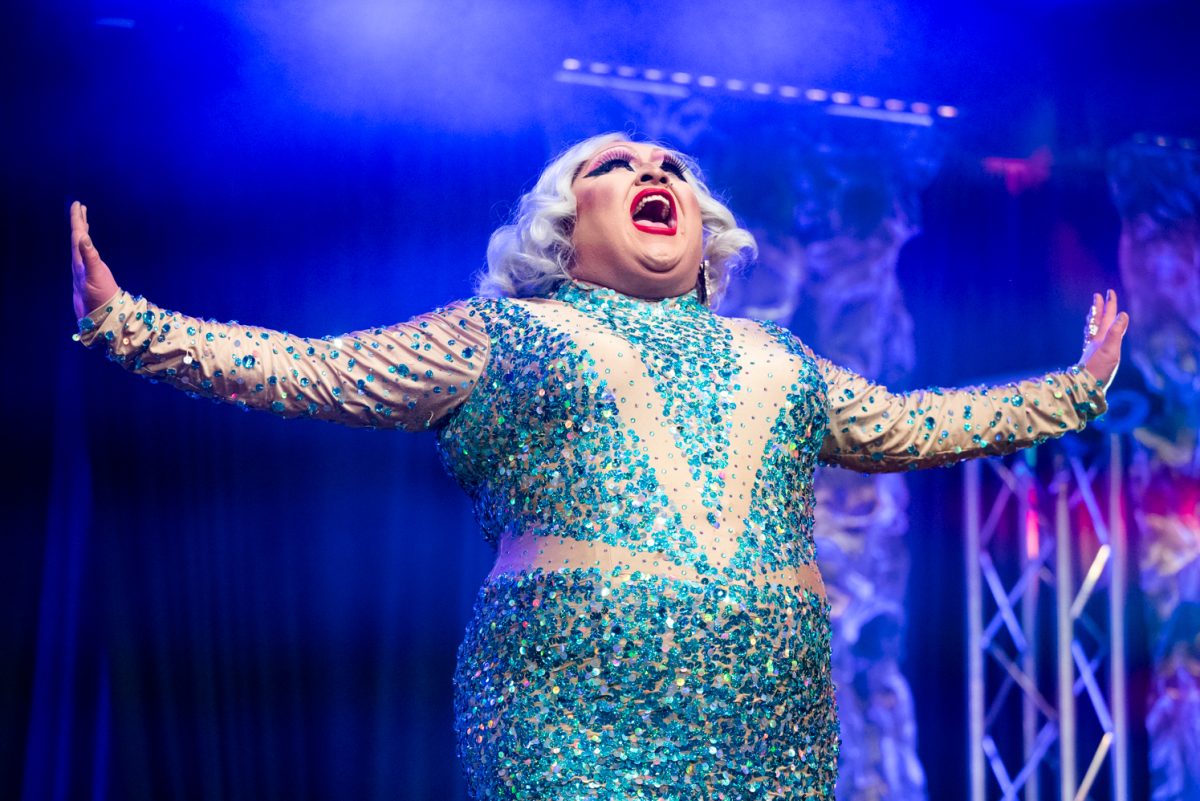
A procession of men, women and children, all decked out in vibrant, multicolored Indigenous regalia, danced in rhythm across the floor of the Lory Student Center Ballroom while a circle of drummers pounded out a steady, energetic beat.
This was the scene on Saturday at the Native American Cultural Center’s Annual Pow Wow, hosted by the American Indian Science and Engineering Society and co-sponsored by the Associated Students of Colorado State University and RamEvents.
The event was an afternoon of fun, food, fancy footwork and fry bread that brought together people from all different tribes and nations across the country in one exciting and energetic celebration of Native culture and the hidden spiritual connections that link our CSU community.
“Pow wow is … a place where you come to rejoice,” said the gathering’s spiritual adviser, Doug Good Feather, called Wiyaka Waśté in his native language. “In our language, they call it ‘oskate,’ which means ‘they come to play.’ So we come to rejoice, and we bring our dance, we bring our songs (and) drums, (and) people travel from all over the country to go to pow wows.”
The event had no shortage of rejoicing. Indeed, it was almost impossible to turn one’s head and not see a happy, smiling face.
Children of all tribes, ages and cultures of the Fort Collins and Front Range communities dashed about the ballroom playing tag, their fingers and lips sticky from the fry bread — a large, flat, donut-like pastry covered in honey — they were munching on. Meanwhile, friends, family, relatives and neighbors sat at tables along the side of the room, or in the chairs set up in the Ballroom, chatting, laughing and catching up with one another.
“We come to rejoice, and we bring our dance, we bring our songs (and) drums, (and) people travel from all over the country to go to pow wows.” -Spiritual Adviser, Doug Good Feather
New Year and Mardi Gras have got nothing on this celebration.
But Pow Wow isn’t just a gathering for a specific Native tribe, nor is it just a general celebration of Native culture as a whole because Native culture itself is not all the same. Indeed, what many people call “Native American culture” is, in fact, a large, diverse collection of unique cultures that all developed in pre-colonial America.
“Don’t just think (you know something because) you read a book,” Good Feather said. “Because there’s all kinds of cultures and different tribes here. My tribe is not the same as another tribe. Our beadwork is not the same as other beadworks. Our language is not the same.”
The wonderful thing about the Pow Wow is the way that it brings all of the different cultures and the different traditions of Native tribes and Native peoples together into a single event. It features intertribal dancing; vendors selling jewelry and clothing inspired by the unique, eclectic styles of different tribes; and many different types of music.
“The drums are different styles,” said senior Phillip Chavez, a mentor at the Native American Cultural Center and member of the Pow Wow Color Guard. “There’s northern style and southern style. … The northern is usually a little bit faster and higher pitch, and the southern style is a little bit slower and lower pitch.”
In addition to his role as a NACC mentor, Chavez is also a veteran and is involved with the Adult Learner and Veteran Services on campus, which is what led him to become a member of the Color Guard. The title of a soldier, and more specifically a warrior, also plays a central role in the Pow Wow celebration and the cultural values of the tribes represented.
“Indigenous people were a warrior society, so we honor our warriors,” Chavez said. “A warrior to us is someone who is willing to sacrifice the shirt off their back for their people, so they stand in front of our enemies for the people.”
What many people call “Native American culture” is, in fact, a large, diverse collection of unique cultures that all developed in pre-colonial America.
It seems that this kind of honor and loyalty is what drives the positive, joyful atmosphere at the Pow Wow gathering.
“We have over 560 different nations in the U.S., so that’s the representation of the Pow Wow, all of those nations coming together,” Chavez said. “And we encourage even non-Natives to come here and show them and experience our culture.”
The event isn’t just a celebration of community though; it’s an attempt to link people with the cultures and people that have come before them and who have preserved traditions for hundreds and thousands of years.
“I was taught (how to drum) by my father, Victor Herrald Sr., who (has) now passed, so he passed his drum to me, … and now my son is out here dancing, and he’s gonna be the next upcoming drum keeper,” said drummer and singer Phillip Herrald.
It’s this marriage of the then and the now that makes the Annual Pow Wow so distinct. It is more than a mere celebration. It’s more than a get-together or a ritual ceremony.
“(Native people) are not religious; we are a spiritual people,” Good Feather said.
And this spirit can certainly be felt in the air at the Pow Wow. The spirit resides where the old and the new meet to dance and celebrate and achieve a deeper, truer understanding of one another so that they may face the yet-to-be with confidence, pride and unity.
Scotty Powell can be reached at entertainment@collegian.com or on Twitter @scottysseus.








